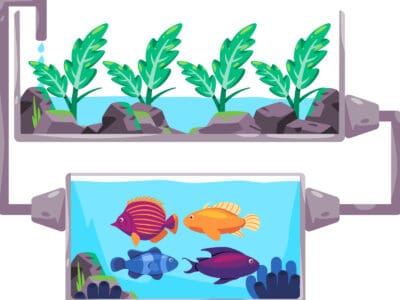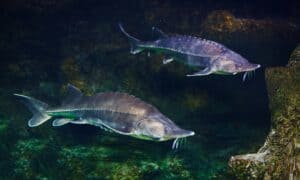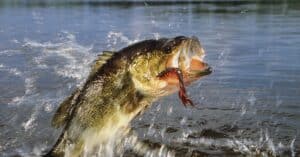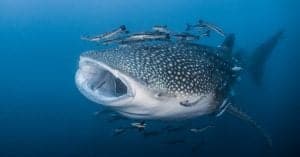Salmon vs Cod: What Are the Differences?
@media (min-width: 481px) {
.mobile-top-content {
display: none;
}
}
#mobileTopContentCTACarouselControls { overflow: hidden; text-overflow: ellipsis; white-space: nowrap; }
.mobile-top-content .more { color: #fff; }
.mobile-top-content a { color: #fff; text-decoration: underline; }
.mobile-top-content a:hover { color: #fff; text-decoration: underline; }
@media (max-width: 480px) {
.mobile-top-content {
background-color: #06a10b;
color: #fff;
text-align: center;
/*height: 60px;
padding-top:5px;*/
font-size:80%;
/* display: block; */
margin: 0px -30px;
}
}
Salmon and codfish, commonly called cod, are some of the most consumed fish in the world. Both of these fish are valued for their taste as well as their nutrition. Still, it’s important to ask what are the differences between salmon vs cod? We’re going to give you a brief overview of each fish and show you how they’re alike and how they differ.
The next time you’re thinking about going to the market to get fresh fish, you’ll know what the fish look like, how they’re unique, and the benefits of consuming each.
Comparing a Salmon and a Cod
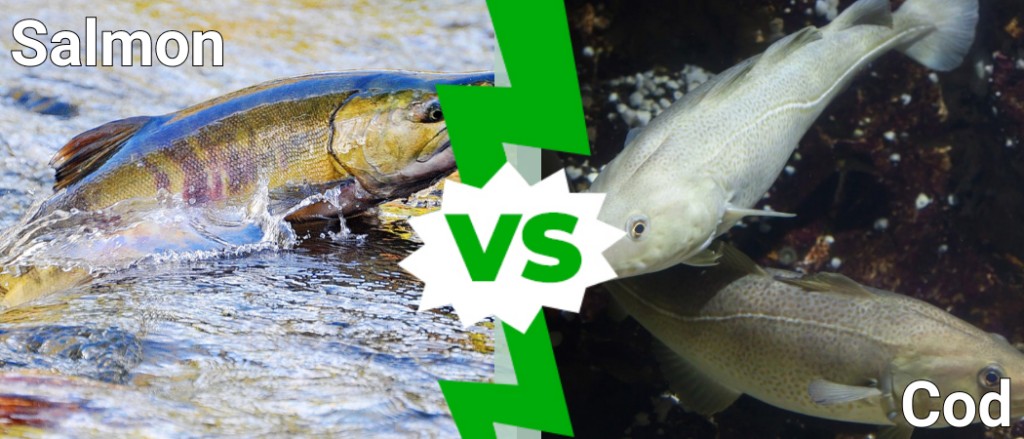
A-Z-Animals.com
| Salmon | Cod | |
| Size | Weight: 4-5lbs, up to 23lbs Length: 25in-30in, up to 58in for King Salmon |
Weight: 33lbs-200lbs, but fish rarely grow to their upper limit Length: 30in-79in |
| Shape | – Torpedo shaped – Small head – Chinook salmon have large heads with prominent curvature of their mouths and black gums and tongues – Torpedo shaped with a slightly round stomach – Rounded front dorsal fin – Dorsal fins of equal length |
|
| Water Type | Anadromous, lives in saltwater and freshwater | Saltwater |
| Color | – Brown, red, blue, green, purple, silver – Often has a lighter underside that can be light gray or nearly white |
Speckled green-brown or grey -brown |
| Fillet Color | – Farm-raised salmon is gray with pink color is added – Wild salmon have pink flesh due to their krill and shrimp diet |
– Opaque white color – Cooks into a white fillet |
| Texture | – Tender – Fatty – Rich |
– Lean – Flaky – Firm |
| Nutrition | – Healthier because it contains omega-3 fatty acids, vitamin B, and potassium – Fatty and calorie-rich |
– Leaner, less calorie-rich – Rich in potassium – Good balance of vitamin C and magnesium |
The Key Differences Between Salmon vs Cod

Travel Faery/Shutterstock.com
The key differences between salmon and cod include their size, fillet colors, and texture of their fillets. Cod are larger than salmon, weighing up to 10 times as much as them and growing far longer than them in the wild.
The color of a cod fillet is opaque when it is freshly cut and cooks white. A salmon fillet is pink in color, opaque on the outside, and light pink on the inside when it is cooked properly. That is a very simple way to differentiate these two fish.
The texture of a salmon fillet is tender, fatty, and rich, but a piece of cod is lean, flaky, and firm. Nobody would confuse the texture of salmon with that of cod. Now that we know the best ways to distinguish between these fish in the market and the kitchen, we’re going to take a closer look at how to tell them apart in the wild and elaborate on the facts we’ve mentioned here.
Salmon vs Cod: Size
Cod are much larger than salmon on average. Cod measure between 30in-79in, and they can grow up to 200lbs in weight. Salmon are interesting in the sense that their various species can weigh much more or less than others.
For example, the average salmon weighs between 4lbs-5lbs, but they can weigh up to 23lbs. Moreover, they can grow between 25in-30in, or even up to 58 inches in the case of King Salmon. Nevertheless, salmon are smaller than cod in the vast majority of cases.
Salmon vs Cod: Shape
Salmon and cod are both torpedo-shaped fish. However, the salmon has a small head and some species, like the Chinook salmon, have prominent, noticeable features like a curved, almost beak-like mouth with black gums and tongue.
Cod have a slightly round stomach that noticeably protrudes outward. Furthermore, they have a rounded front dorsal fin, and their dorsal fins are all equal length, a helpful distinguishing feature.
Salmon vs Cod: Water Type

Miroslav Halama/Shutterstock.com
Salmon can live in saltwater and freshwater, but cod can only survive in saltwater. In fact, salmon are one of the only anadromous fish out there, meaning they survive in both of the major types of water.
Some salmon have a unique lifecycle that sees them born in freshwater, live in saltwater, and then possibly return to freshwater later in life.
Salmon vs Cod: Color
Salmon are brown, red, blue, green, purple, and silver, often with a white underside and various colors on their heads. The underside is usually a light gray or white color. Cod are any mix of speckled green-brown or grayish brown.
Along with the shape of these fish, you can tell them apart from each other by their color.
Salmon vs Cod: Fillet Color

Jane Rix/Shutterstock.com
Salmon fillets are a pinkish-orange color, but cod fillets are an opaque white. When you cook a cod fillet, it becomes white rather than opaque. Cooked salmon fillets will have an opaque outside and a light pink inside when it is cooked well.
It’s important to note that farm-raised salmon have gray flesh because they cannot eat the krill and shrimp possess astaxanthin, the substance that gives salmon their pink color. Thus, farm-raised salmon fillets are artificially colored.
Salmon vs Cod: Texture
Fresh salmon fillets are known for being rich, fatty, and tender, and cod fillets are lean, flaky, and somewhat firm. Salmon are a rather oily fish, and that makes it very good for use in certain recipes, like sushi and sashimi. Even if you were blindfolded, you could feel the difference in these animals’ texture.
Salmon vs Cod: Nutrition

Africa Studio/Shutterstock.com
Salmon are more nutritious than cod, but their fillets are also filled with more fats and calories. Salmon is healthier because it has omega-3 fatty acids, vitamin B, potassium, and many other vitamins and nutrients.
Cod is leaner than salmon, and it is less calorie dense. This fish is also rich in potassium, vitamin c, and magnesium. All told, eating fish as part of your diet is always a good idea. However, salmon has so many benefits that it’s probably better to integrate into your diet.
All told, cod and salmon are very different whether they are live fish in the water or food in our markets. You can tell them apart in a variety of ways because they have so many little distinctions. Armed with the data we’ve provided here, you can confidently say which fish is which and determine what one you want to eat.
More from A-Z Animals
.more-snake-card-image { max-height:140px !important; }
@media (min-width: 481px) {
.mobile-top-content {
display: none;
}
}
#mobileTopContentCTACarouselControls { overflow: hidden; text-overflow: ellipsis; white-space: nowrap; }
.mobile-top-content .more { color: #fff; }
.mobile-top-content a { color: #fff; text-decoration: underline; }
.mobile-top-content a:hover { color: #fff; text-decoration: underline; }
@media (max-width: 480px) {
.mobile-top-content {
background-color: #06a10b;
color: #fff;
text-align: center;
/*height: 60px;
padding-top:5px;*/
font-size:80%;
/* display: block; */
margin: 0px -30px;
}
}
Salmon and codfish, commonly called cod, are some of the most consumed fish in the world. Both of these fish are valued for their taste as well as their nutrition. Still, it’s important to ask what are the differences between salmon vs cod? We’re going to give you a brief overview of each fish and show you how they’re alike and how they differ.
The next time you’re thinking about going to the market to get fresh fish, you’ll know what the fish look like, how they’re unique, and the benefits of consuming each.
Comparing a Salmon and a Cod

A-Z-Animals.com
| Salmon | Cod | |
| Size | Weight: 4-5lbs, up to 23lbs Length: 25in-30in, up to 58in for King Salmon |
Weight: 33lbs-200lbs, but fish rarely grow to their upper limit Length: 30in-79in |
| Shape | – Torpedo shaped – Small head – Chinook salmon have large heads with prominent curvature of their mouths and black gums and tongues – Torpedo shaped with a slightly round stomach – Rounded front dorsal fin – Dorsal fins of equal length |
|
| Water Type | Anadromous, lives in saltwater and freshwater | Saltwater |
| Color | – Brown, red, blue, green, purple, silver – Often has a lighter underside that can be light gray or nearly white |
Speckled green-brown or grey -brown |
| Fillet Color | – Farm-raised salmon is gray with pink color is added – Wild salmon have pink flesh due to their krill and shrimp diet |
– Opaque white color – Cooks into a white fillet |
| Texture | – Tender – Fatty – Rich |
– Lean – Flaky – Firm |
| Nutrition | – Healthier because it contains omega-3 fatty acids, vitamin B, and potassium – Fatty and calorie-rich |
– Leaner, less calorie-rich – Rich in potassium – Good balance of vitamin C and magnesium |
The Key Differences Between Salmon vs Cod

Travel Faery/Shutterstock.com
The key differences between salmon and cod include their size, fillet colors, and texture of their fillets. Cod are larger than salmon, weighing up to 10 times as much as them and growing far longer than them in the wild.
The color of a cod fillet is opaque when it is freshly cut and cooks white. A salmon fillet is pink in color, opaque on the outside, and light pink on the inside when it is cooked properly. That is a very simple way to differentiate these two fish.
The texture of a salmon fillet is tender, fatty, and rich, but a piece of cod is lean, flaky, and firm. Nobody would confuse the texture of salmon with that of cod. Now that we know the best ways to distinguish between these fish in the market and the kitchen, we’re going to take a closer look at how to tell them apart in the wild and elaborate on the facts we’ve mentioned here.
Salmon vs Cod: Size
Cod are much larger than salmon on average. Cod measure between 30in-79in, and they can grow up to 200lbs in weight. Salmon are interesting in the sense that their various species can weigh much more or less than others.
For example, the average salmon weighs between 4lbs-5lbs, but they can weigh up to 23lbs. Moreover, they can grow between 25in-30in, or even up to 58 inches in the case of King Salmon. Nevertheless, salmon are smaller than cod in the vast majority of cases.
Salmon vs Cod: Shape
Salmon and cod are both torpedo-shaped fish. However, the salmon has a small head and some species, like the Chinook salmon, have prominent, noticeable features like a curved, almost beak-like mouth with black gums and tongue.
Cod have a slightly round stomach that noticeably protrudes outward. Furthermore, they have a rounded front dorsal fin, and their dorsal fins are all equal length, a helpful distinguishing feature.
Salmon vs Cod: Water Type

Miroslav Halama/Shutterstock.com
Salmon can live in saltwater and freshwater, but cod can only survive in saltwater. In fact, salmon are one of the only anadromous fish out there, meaning they survive in both of the major types of water.
Some salmon have a unique lifecycle that sees them born in freshwater, live in saltwater, and then possibly return to freshwater later in life.
Salmon vs Cod: Color
Salmon are brown, red, blue, green, purple, and silver, often with a white underside and various colors on their heads. The underside is usually a light gray or white color. Cod are any mix of speckled green-brown or grayish brown.
Along with the shape of these fish, you can tell them apart from each other by their color.
Salmon vs Cod: Fillet Color

Jane Rix/Shutterstock.com
Salmon fillets are a pinkish-orange color, but cod fillets are an opaque white. When you cook a cod fillet, it becomes white rather than opaque. Cooked salmon fillets will have an opaque outside and a light pink inside when it is cooked well.
It’s important to note that farm-raised salmon have gray flesh because they cannot eat the krill and shrimp possess astaxanthin, the substance that gives salmon their pink color. Thus, farm-raised salmon fillets are artificially colored.
Salmon vs Cod: Texture
Fresh salmon fillets are known for being rich, fatty, and tender, and cod fillets are lean, flaky, and somewhat firm. Salmon are a rather oily fish, and that makes it very good for use in certain recipes, like sushi and sashimi. Even if you were blindfolded, you could feel the difference in these animals’ texture.
Salmon vs Cod: Nutrition

Africa Studio/Shutterstock.com
Salmon are more nutritious than cod, but their fillets are also filled with more fats and calories. Salmon is healthier because it has omega-3 fatty acids, vitamin B, potassium, and many other vitamins and nutrients.
Cod is leaner than salmon, and it is less calorie dense. This fish is also rich in potassium, vitamin c, and magnesium. All told, eating fish as part of your diet is always a good idea. However, salmon has so many benefits that it’s probably better to integrate into your diet.
All told, cod and salmon are very different whether they are live fish in the water or food in our markets. You can tell them apart in a variety of ways because they have so many little distinctions. Armed with the data we’ve provided here, you can confidently say which fish is which and determine what one you want to eat.

